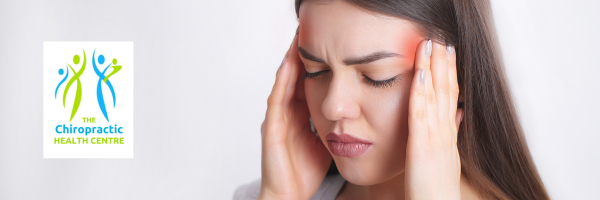
Women suffer from headaches at a much greater rate than men. In fact, women are three times more likely to develop headache disorders such as migraine than men. Part of this discrepancy is due to hormonal links of headaches, particularly the effects of estrogen and the menstrual cycle.
Headaches can occur across the menstrual cycle but most often we see two types: tension headaches and migraine headaches. Typically tension headaches with a hormonal component occur around menstruation whereas migraine can be triggered during menstruation or ovulation.
Migraine headaches usually present as one sided, severe throbbing pain with other associated symptoms such as nausea, vomiting, fatigue and sensitivity to light or sound. More than half of migraine sufferers report a link of attach with menstrual cycle changes. Menstrual migraines usually occur two days before to three days after menstruation. It is thought to be linked to a drop in estrogen levels and a rise in an inflammatory substance called “prostaglandins”. Migraine attacks during menstruation are very common, with about three out of four women experiencing this as a common trigger. Generally, this type presents without an aura (sensory changes like flashing lights in the hour leading up to an attack) but tend to last longer and have more nausea, vomiting and functional disability. The other point in the menstrual cycle where migraine attacks are common are during ovulation. We know less about this type but it is thought to be triggered by high levels of estrogen and luteinizing hormone. These may be shorter and present with more “typical” migraine patterns with those who experience aura.
Tension headaches present as a tight, squeezing band around the forehead and neck. These are not as severe as migraines and tend not to throb. Generally, these are worst during menstruation. Some women only experience tension headaches during menstruation which is termed a “true menstrual type headache”. Others may experience tension headaches at any point in their cycle but may note an increase in intensity and frequency at the beginning of menstruation. Often this has a strong musculoskeletal component due to muscular tension in the neck, head and face.
So why do hormones cause headaches? The relationship between hormones and headaches is a complex one that we don’t fully understand. There are a few links that we have found that have to do with hormonal effects on pain processing, effects on blood vessels, inflammatory responses during menstruation and the effects of estrogen on serotonin systems in the brain.
Even though we may not fully understand the science, we know what we can do to help. The first recommendation is to keep a headache diary where you can track your headaches against your cycle and determine any triggers. Avoiding your known triggers such as caffeine, alcohol and stress can be a proactive step in reducing attacks. You may want to talk to your doctor about medication options in severe cases. Birth control should also be reviewed. While some women find headache relief with birth control, 20 – 50% of women have increased headache attacks. It is also recommended that if you avoid oral contraceptives with estrogen if you experience aura phenomena as it may increase your stroke risk. Studies have found that magnesium supplementation of about 400 – 500mg a day caused significant relief in menstrual migraine attacks. Manual therapy such as dry needling, massage and adjustments can address the musculoskeletal component of a headache, a key component in pain relief.
While hormonal headaches are complex, working with your healthcare provider to find solutions that work for your unique needs is always recommended.
021 683 2996
44 Second Avenue, Harfield Village | 021 674 1120 | info@harfield-village.co.za
© 2023 Harfield Village Online – Maintained by LNVA.